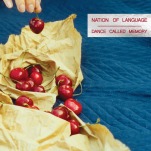Life-Changing Cookbooks: The 30-Minute Cook
Paste's column on the cookbooks that shape who we are
Photos by Beth JohnstonIn 1997, I graduated from Yale Law School, certain of nothing except that I did not want to be a lawyer. Instead of trying to make myself into a fledgling law professor, as most of my classmates did in law school, I had spent hours poring over memoirs, essays, and travelogues, trying to figure out how to do what the greatest nonfiction writers did. I took a writing class from a famous novelist. I spent a summer working at a national magazine instead of at a law firm. I underlined key passages in my $2 copy of Walden, where Thoreau bemoans the fact that “the mass of men lead lives of quiet desperation,” and encourages his readers to pursue their dreams instead. I was ready to take his advice.
I decided I needed to go abroad, to throw myself into a new environment where everything would seem strange and therefore be compelling material for the travel narrative I was certain I could distill from my experiences. One of my best friends from college, David, had landed himself a cushy consulting job in London, and he had a spare bedroom he was willing to let me stay in for a modest rent. My mother, bless her generous soul, was willing to finance a year of my finding myself. And so in May of 1997, I moved to England.
My timing could not have been better—I arrived just days after Tony Blair was elected Prime Minister, ushering in what the British press called “Cool Britannia”—a sense that being English was not just something to be proud of, but was downright chic. London was flush and buzzing, indulging in a food renaissance that helped foster the careers of people like Marco Pierre White, Gordon Ramsey, Ruth Rogers, and Jamie Oliver.
I was lucky in other ways, too. David’s best friend at work was an American who’d done graduate work at Cambridge, where he’d met a tall, slim, dark eyed English beauty named Louise. Louise quickly became my closest English friend, based in no small part on our mutual love of cooking and eating. Most weekend evenings that first summer in the UK, I would grab a couple of bottles of white wine from the nearest corner store and meet my friends at Louise’s flat. Louise and her roommates had a roof terrace that featured a grill, and they’d throw a whole chicken on the fire to roast, along with whatever vegetables they had to hand. We’d work our way through the wine slowly as the summer night unfurled, and by the time we ate we were so tipsy and hungry, everything tasted divine.
Without talking about it much, David and I had quickly sketched out distinct household roles for ourselves. I shopped, cooked, and managed our social calendar, while David did the dishes and enthusiastically ate what I made. Within a few weeks of arriving in England, I’d run through most of my familiar dishes and needed new ideas. I was also curious about the food around me and wanted to learn more about English flavors. I asked Louise for advice about what cookbook to buy so I could churn out weeknight dinners. “Nigel Slater,” she said without hesitation, pulling a small, fat volume from her kitchen shelf. “I have his Real Fast Food, but I think he has a new book out.”
Slater implied that most dishes would turn out best if the cook had the right degree of nonchalance. His serving suggestions conjured up an attainably sophisticated world of people who threw together a sensual meal for a lover on short notice.
I bought the book she’d recommended, which was called The 30-Minute Cook, and I set to reading. Slater wasn’t just a knowledgeable chef; he was an evocative writer, too. I could open to any page at random and salivate. Here was Slater writing about aubergine-cheese sandwiches: “The cheese may ooze a little from the sides—just scoop it up with a palette knife and wipe it on the aubergines.” On cooking sausage for a sandwich: “Fry the sausage . . . till the skin is golden brown with a few black patches, and swollen to bursting.” On a chicken dish with garlic, cider, and cream: “A voluptuous, ivory coloured sauce that illustrates how sweet and mellow garlic can become when it is blanched.”
I spent long hours poring over the book, imagining the dishes he narrated. Slater implied that most of them would turn out best if the cook had the right degree of nonchalance. (One recipe for carrots began: “If the oven is on anyway.”) Slater’s serving suggestions, in particular, conjured up an attainably sophisticated world of people who threw together a sensual meal for a lover on short notice. As he warned readers in an introduction, “Most of the recipes are for two. I know more people who eat in twos than in fours. Except at the weekend.” So an Indian spiced aubergine dish was described as a recipe “For 2 people as a quick, mildly spiced stew to be eaten with warm Indian breads”—and, at the end, a dollop of “thick natural yoghurt.” Chorizo and chickpeas were “A warming, frugal and hospitable supper, best eaten with a glass of cold beer.” And how could you not cook tomato and olive tarts in the face of Slater’s explanation that “These crisp, savoury tarts make a delightful outdoor summer lunch, especially with a bowl of green salad into which you have tossed some lightly cooked French beans. A bottle of rosé would not go down badly either.”
Most of the recipes weren’t even recipes, but rather brief descriptions of things you could do to food. Slater acknowledged this by calling lots of them “ways”, as in “some quick ways with spinach” or “An Italian way with peas.” It’s hard to explain what Slater meant by a way to someone who’s never read him. This is as close as I can get: Imagine you’re in the South of France for a week. Exploring the town, you find a butcher shop or a fishmonger, and the cuts of meat or the silvery fish in the windows tempt you inside. You buy a pound of shrimp, a packet of lamb chops, and you ask in halting French about the best way to cook your purchase. The answer you’d get in that shop in France was the exact style of Slater’s recipes. This is what he says to do with prawns: “You will need about 350g/12oz prawns for two people. They must be plump and in their shells. You can skewer them if you wish but I see little point. Lay the prawns flat on the grill pan, cook them over, or under, a high heat till pink for 3-4 minutes. Eat them while they are hot with a little softened, warmed butter.” Virtually all Slater’s recipes included a mouth-watering description, an unnecessarily opinionated aside, a dollop of instructional imprecision—and a generous knob of butter or glug of olive oil. At times I felt like I was listening to someone’s grandmother letting me in on the secret to a family recipe.
-

-

-

-

-

-

-

-

-

-

-

-

-

-

-

-

-

-

-

-

-

-

-

-

-

-

-

-

-

-

-

-

-

-

-

-

-

-

-

-










































